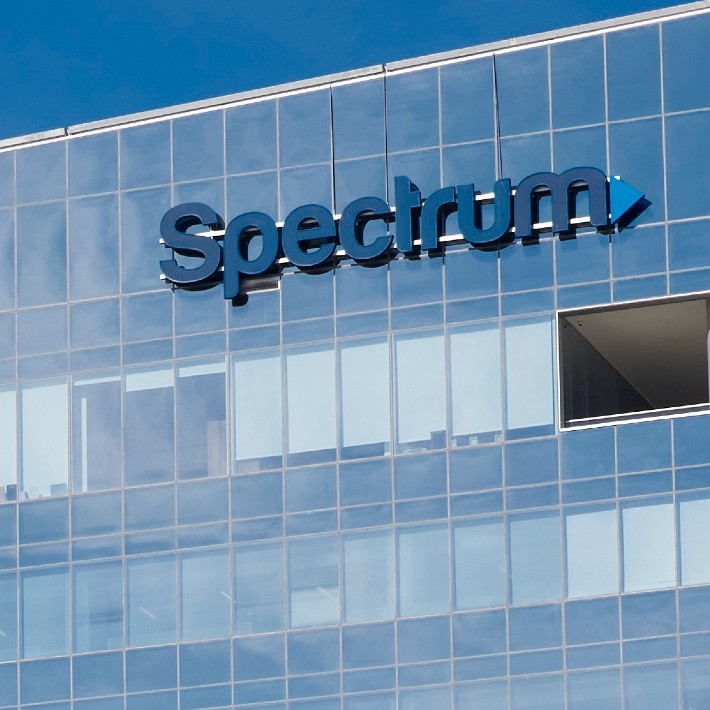For Charter, there's "no better use of resources than rural expansion," beating out stock repurchases and the acquisition of cable assets, New Street Research's analysts surmised.

Chris Winfrey, Charter Communications' new CEO, has long held that the operator's fiber network expansion, largely focused on rural areas, is akin to M&A in a market segment that's marked by a dearth of buying opportunities.
"You're essentially building a cable company … over several years from scratch," Winfrey said of the company's view on rural network buildouts in March 2021 when he was Charter's chief operating officer. At the time, the operator was just starting to gear up for an original commitment to build out more than 1 million locations tied to phase I of the Rural Digital Opportunity Fund (RDOF).
Figure 1:  (Source: Charter Communications)
(Source: Charter Communications)
Some two years later, analysts who have been weighing the economic impact and opportunity of Charter's rural buildout strategy believe that the numbers are actually quite a bit better than the returns on investment Charter could pull from acquiring cable assets or repurchasing shares.
"Most investors seem to think that rural expansion will drive adequate, if unexciting returns," the analysts at New Street Research explained in a report that explores Charter's rural expansion economics. "Our analysis suggests that Charter creates 4-5x as much value with every dollar they invest in rural expansion than with share repurchases at current prices. They are also far better off investing in rural than buying extant Cable assets."
In a model that focuses on the economics of Charter's RFOF and state-funded opportunities plus those funded by the Broadband Equity, Access, and Deployment (BEAD) program, New Street Research envisions an aggregate return of 15%.
Attractive rates of return
New Street's analysis includes a broadband-only internal rate of return (IRR) of 12.5% for RDOF with a "terminal penetration" of 70% and broadband average revenue per unit that starts at $55 and grows 3.7% annually. The research firm regards its 70% terminal penetration rate of 70% as "conservative."
A "fully-loaded" RDOF market with other services, including mobile and pay-TV, raises New Street's anticipated IRR to 13.7%.
Meanwhile, they see a fully-loaded IRR of 16.7% in state-funded markets, and 15.6% in BEAD-funded markets. New Street's BEAD use case for Charter assumes funding for about 1 million locations.
For Charter, there's "[n]o better use of resources than rural expansion," New Street Research's analysts surmised. To amplify that, Charter could trade at $4,100 per location in rural markets, up from the $3,000 per location Charter trades at today.
"With buy-backs, they are effectively buying a Cable asset at $3,000 that is worth $4,100, creating $1,100 in value," the analysts added. "In rural markets, they build an asset worth $9,100 at a cost of $4,200, creating value of $4,900. Charter creates 4-5x more value building than [it] would repurchasing [its] own stock. Rural expansion beats Cable M&A too."
Charter built out more than 200,000 new rural passings in 2022 and is seeing 40% subscriber penetrations in those passings within six months of service, Charter CFO Jessica Fisher said in January. Charter plans to build about 300,000 subsidized rural passings in 2023.
Looking further out, Craig Moffett, analyst with MoffettNathanson (a unit of SVB Securities) is modeling incremental subsidized rural passings of about 300,000 in 2023 and 2024 for Charter, peaking at nearly 500,000 in 2025 and 2026, then winding down to 300,000 in 2027. While those are placeholders ahead of the BEAD awards, Moffett expects Charter's unsubsidized and subsidized edge-outs to reach a cumulative 5 million incremental passings between now and the end of 2027.
Figure 2:  Click here for a larger version of this image.
Click here for a larger version of this image.
(Used with permission)
Moffett's model assumes a penetration rate of 40% in year one and 75% by year four. He also argues that growth in rural scenarios, where Charter "faces little or no terrestrial broadband competition" is much more predictable than growth in more competitive markets.
Skepticism about buildout strategy
Charter's buildout plans have met with some skepticism among investors. Charter announced in December that capital spending would rise due to its rural buildout strategy, with capital expenditures peaking in either 2024 or 2025. The stock took a hit at the time but has largely recovered.
"Upon reflection, Charter's estimate of 'mid-to-high-teens' IRRs sounded pretty good," Moffett noted in another recent report exploring the economics of Charter's rural buildout strategy. "But that's not to say that the market's reaction to the edge-out strategy is meaningfully positive."
Moffett described investor reaction as "skeptical," as Charter's IRR expectations were "largely left to be taken on faith." Charter's assertion on returns on investment in the high-teens "is not unreasonable," he added.
Bigger picture, Moffett's view is that Charter's rural edge-out strategy "is a clear positive" in part because it provides some cushion against slowing broadband subscriber growth elsewhere, and because he expects the strategy to become a "meaningful contributor" to both EBITDA and free cash flow.
Related posts:
— Jeff Baumgartner, Senior Editor, Light Reading
About the Author(s)
You May Also Like











